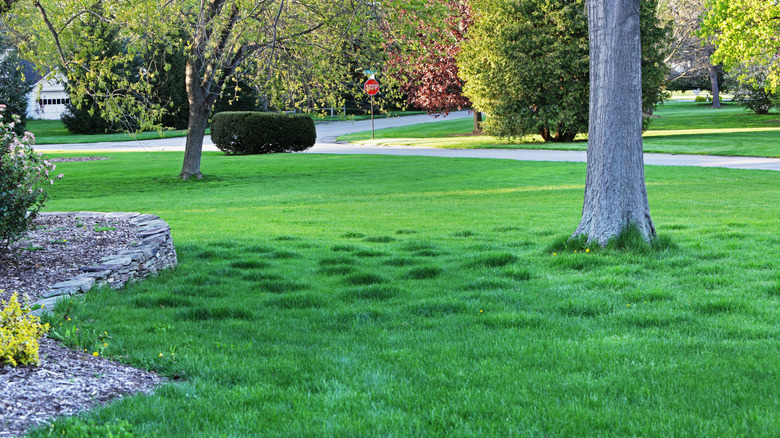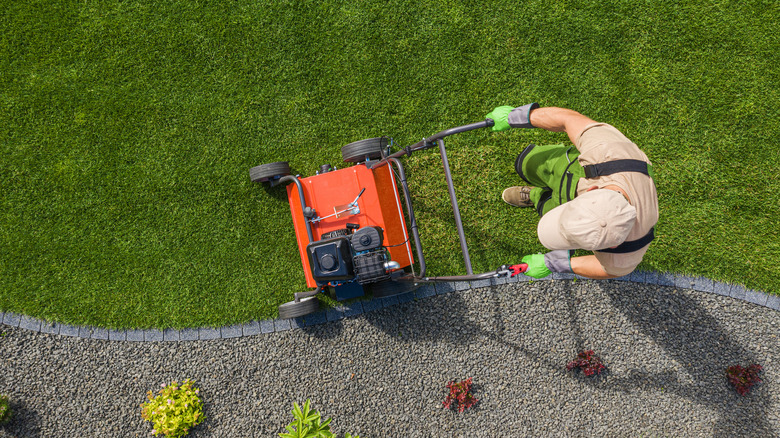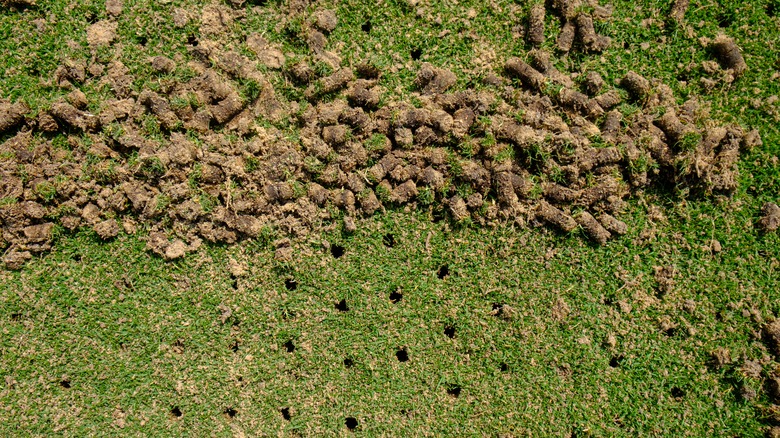Having This Type Of Soil May Make Your Lawn Look Uneven
Living in an area with particularly heavy clay soil can lead to an abnormal-looking lawn come spring, especially if you aren't used to this type of soil. Since clay soil compacts easily, it often leads to poor drainage and uneven settling. In response to the cold, clay soil has the tendency to freeze and expand, putting pressure on the surface. When the warmer months arrive, the soil contracts as it thaws, which can create pockets of air and an uneven appearance on your lawn. Over time, the cycle of freezing and thawing can add more irregularities to the look of your yard as bumps or depressions form along the surface. For those who wish to have a more even-looking surface across their yard, there are simple actions you can take to help dissipate some of the issues that accompany the freezing and thawing of the soil. The first step is to try aerating your lawn.
Annually aerating clay-heavy soil can significantly improve its appearance by helping to alleviate compaction and allow for better drainage. When you aerate your lawn, the aeration tools create small holes in the ground, allowing air and water to penetrate the ground deeply and more easily. As a result, it helps to break up dense clay clumps which results in a more even surface. Simultaneously, this helps to stabilize the soil and mitigates the effects of freezing and thawing cycles, thereby preventing indentations or bumps from forming over time.
Aerating your lawn
If you're ready to help alleviate some of the pressure in your heavy-clay soil to create a level appearance, you can aerate your lawn for healthier grass with one of two different methods. Both will help to improve its overall structure, drainage, and health, but each involves slightly different approaches and requires different tools. The first is known as core aeration. This method is a mechanical type of aeration that utilizes specialized equipment to remove small plugs of soil from the lawn at equal intervals. By pulling out the plugs, or cores, from the ground, the aerator helps break up the compacted soil, allowing for air, water, and nutrients to flow more freely through the remaining soil. As a result, this process can stimulate root growth and encourage the decomposition of the thatch layer on top of the soil, further promoting the flow of water through the ground.
The second method of aerating your lawn is called spike aeration. This method is simpler but may be slightly less effective for improving clay-heavy soil because it doesn't remove the soil cores. Nevertheless, it can still help alleviate some surface compaction. To do so, there are a number of tools to choose from, like spiked shoes, rolling aerators, or even a pitchfork. All of these tools create channels in the ground for water and air to flow more freely, providing better drainage and preventing less expansion as the ground freezes and thaws.
Cautions for this method
If soil aeration seems like a good option for helping to prevent divots or mounds in your heavy-clay soil, consider a few cautions before embarking on this endeavor. The first thing to remember is that clay soil is difficult to work with. When it's wet, it is easier to compact and can actually make the soil worse if it's very soaked through. On the other hand, very dry clay soil can be quite dense and hard, making it difficult to aerate. In this way, it's good to find a sweet spot somewhere in the middle to aerate your lawn properly without causing more damage. If it's particularly dry, you might want to water your lawn the day before aerating. However, if it's been raining for several straight days, allow some of the moisture to evaporate and dry up before proceeding.
Another important outcome to keep in mind is that if you choose to core aerate your lawn, it will probably look worse before it looks better. As the machinery removes the lawn plugs, it deposits them on top of the soil. Without removing all of these plugs, they will litter the surface of your lawn until they break down naturally, which could take longer with dryer weather. Nevertheless, these plugs are important to leave on top of your lawn as they can act as compost, top-dressing your lawn and providing nutrients to help it thrive.


